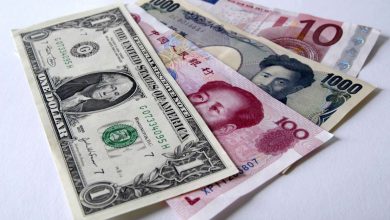Why Treasury Bills at 2% is actually a good thing

While the current prevailing rate of 2% might not be good news for investors, the low rates could be better for the Nigerian economy.
Latest stop rates from the Nigerian Treasury Bill auction held last week revealed some of the lowest rates for the nation’s T-Bills market in recent times. The 91-day bills had stop rates of 1% and the 182-day bills was also 1%. For the full year, the 364-day bills had an equally low rate of 2%. This is actually a good thing, as investors will become more creative, amongst other benefits.
If you were a frequent Treasury bills investor in the pre-COVID-19 era, you will most likely agree that one of the favorite markets for risk-averse investors, has taken a major dip over the past year. In 2019, the rate was as high as 13.029% – enough to give you a fighting chance with the equally high rate of inflation, as opposed to a savings account offering around 4%.
However, while the current prevailing rate of 2% might not be good news for investors; theoretically, the low rates could be better for the Nigerian economy.
Double digits risk-free rates impede development
At the very basic level, having a risk-free investment that yields a guaranteed interest rate of about 15%, means that investors can put in their funds and fold their hands. Therefore, the option of making less risky investments become less alluring, as the lower rates can easily be mitigated by the relative safety of the principal (and return!) – something many businesses cannot boast of today.
Put simply, why should business owners risk employing people and possibly make losses, when they can invest in Treasury bills? After all, they too are exposed to the same inflation rate.
Unsurprisingly, this has contributed its own fair share in impeding the growth of the nation. Think about the percentage of the income of Nigerian financial institutions like banks that are from Treasury Bills. Conservatively, Nigerian PFA’s also have a significant percentage of their funds in Treasury bills – doing little and gaining little. It is always about the “cheapest to deliver.”
No society can effectively spur development with only safe investments, as it comes with its own benefits like creating more jobs, building the stock market, and ultimately strengthening the industries in the country.
‘Model’ economies have really low risk-free interest rates
Some of the largest economies like the US, Japan, and Germany are known to have some of the lowest rates for risk-free assets. Whilst their rates cannot also be isolated from their equally low borrowing costs, the facts are crystal clear.
From a demand and supply standpoint, at 15%, it means that what the government is willing to pay to get capital is high. This makes it even more expensive for the government to fund infrastructural development.
From a private sector standpoint, it is by taking risks that angel investors emerge, companies get seed funding, and further development is enhanced. Without this development, very few jobs will be created. Interestingly, most of the countries with the highest amount of venture capitalist investments have some of the lowest rates for risk-free assets.
How investments should be done
There is an old investment strategy known as “Carry Trade.” The way it works is simple – you borrow at a low-interest rate, convert the borrowed amount into another currency, and invest in assets that provide higher rates of return in that currency. If Treasury Bills offer such high rates, “foreign investments” of this nature will not aid in the overall development of the economy. As long as the exchange rate is stable, investors get to make a killing with no value-added. This is just one of the many lapses of investing in high risk-free assets.
With the rates low, people can now invest the way investment should be done. Investors will now be forced to be creative. Consequently, this will birth even further infrastructural developments. For example, with this rate sustained, mortgage-backed securities and other forms of infrastructural funding can now take place.
Though, it is not without its own limitations, keeping the free money low is always a better option.




